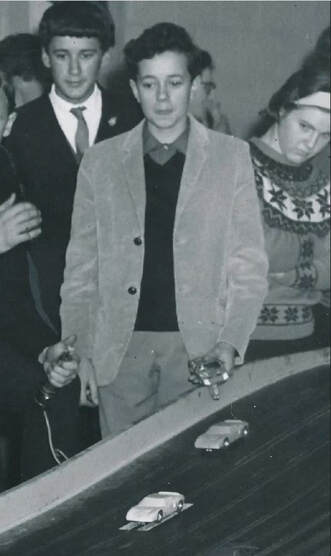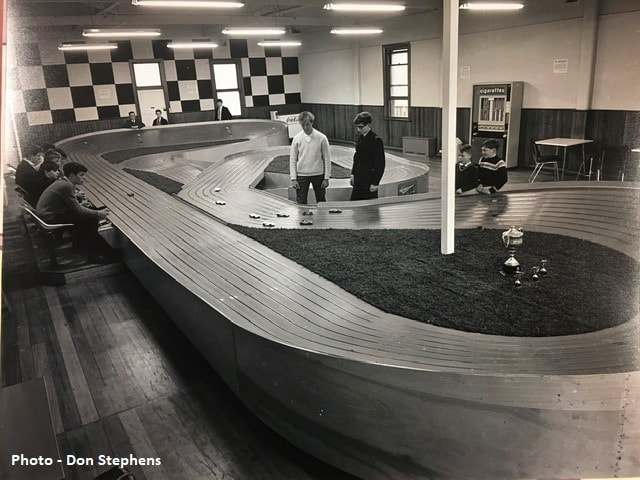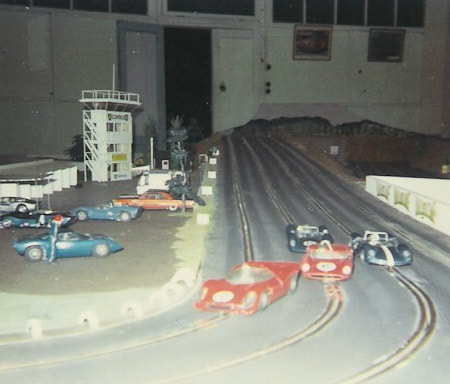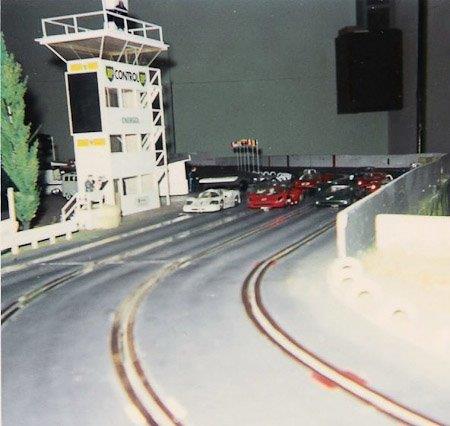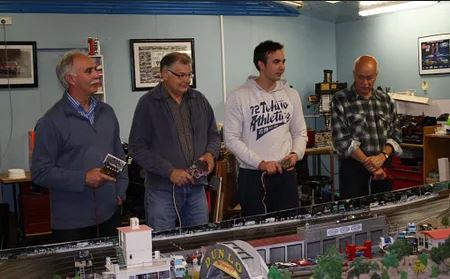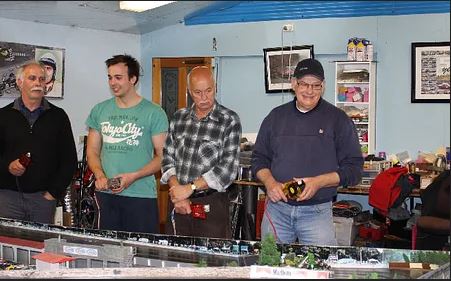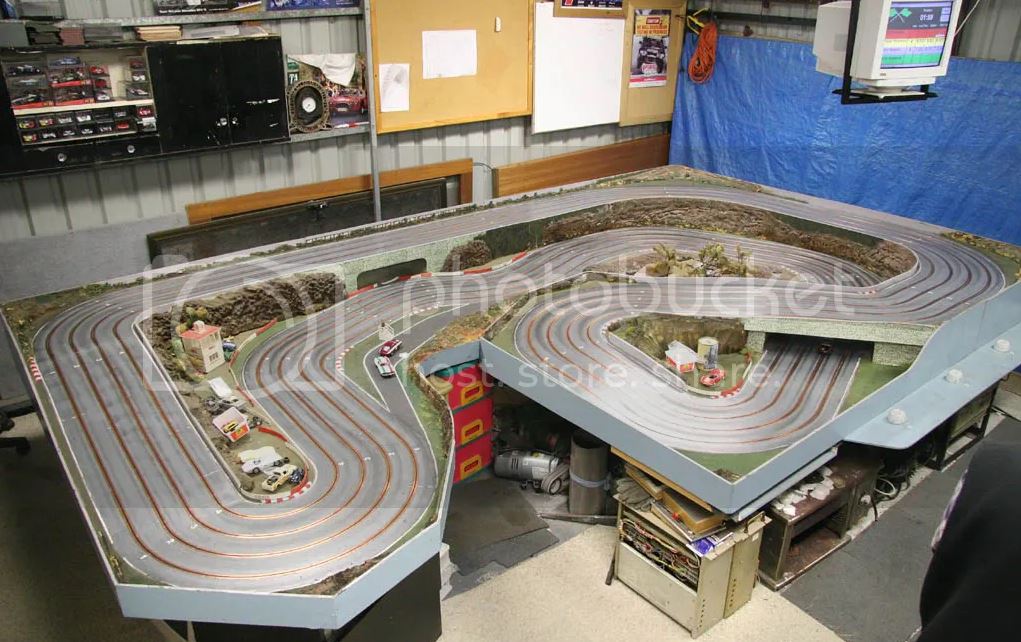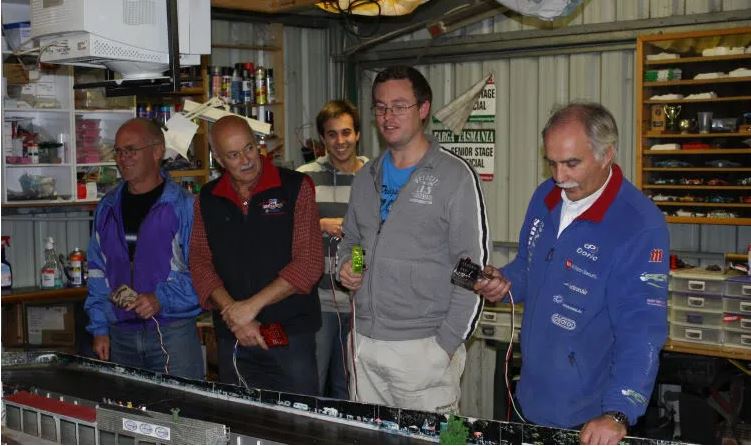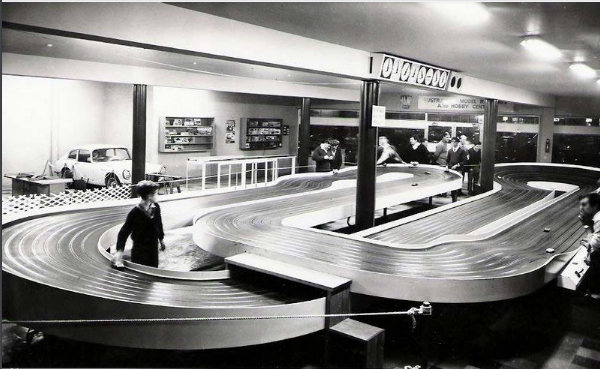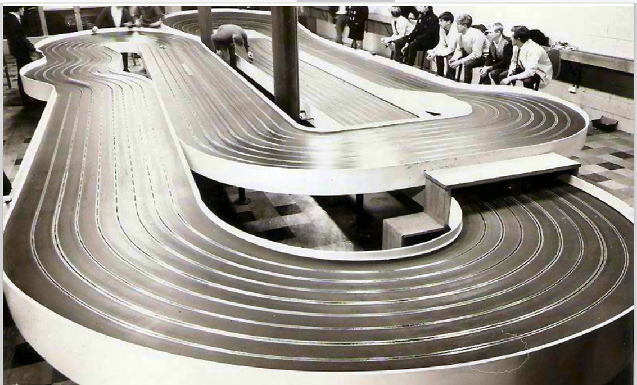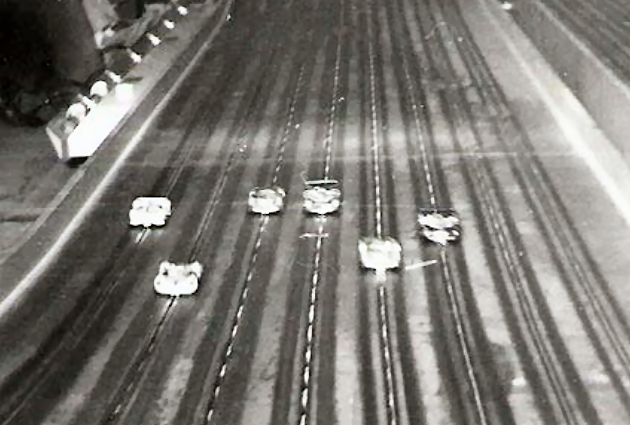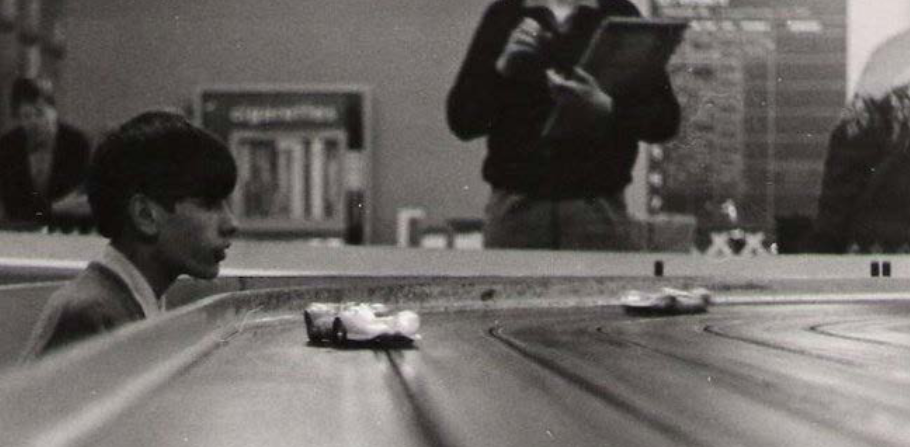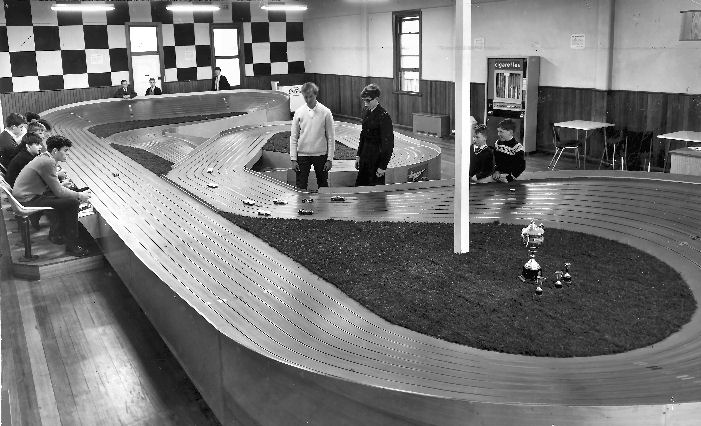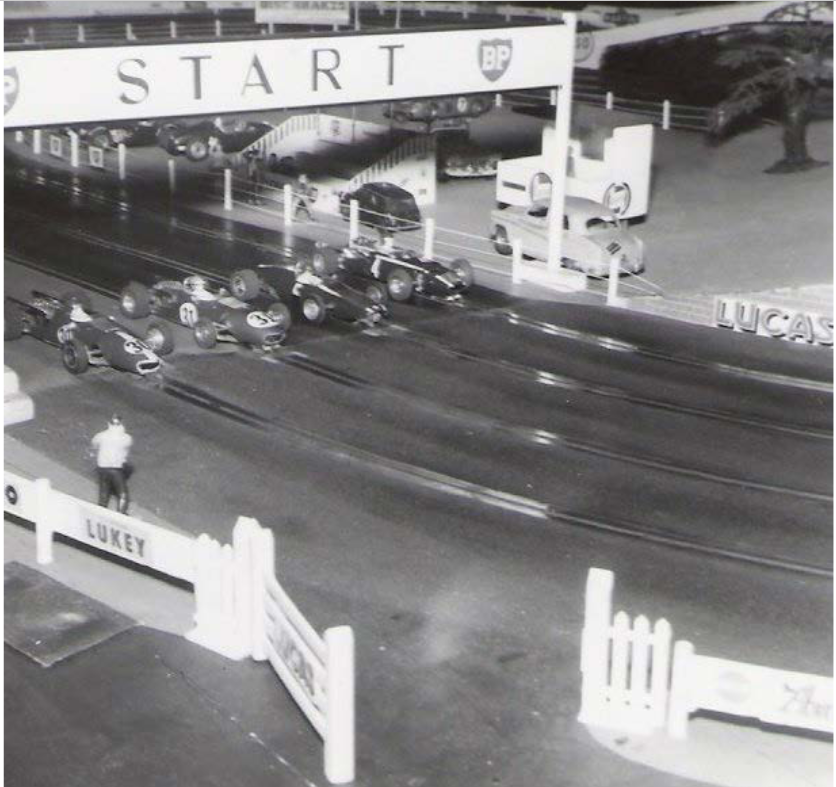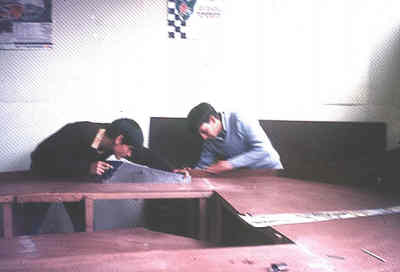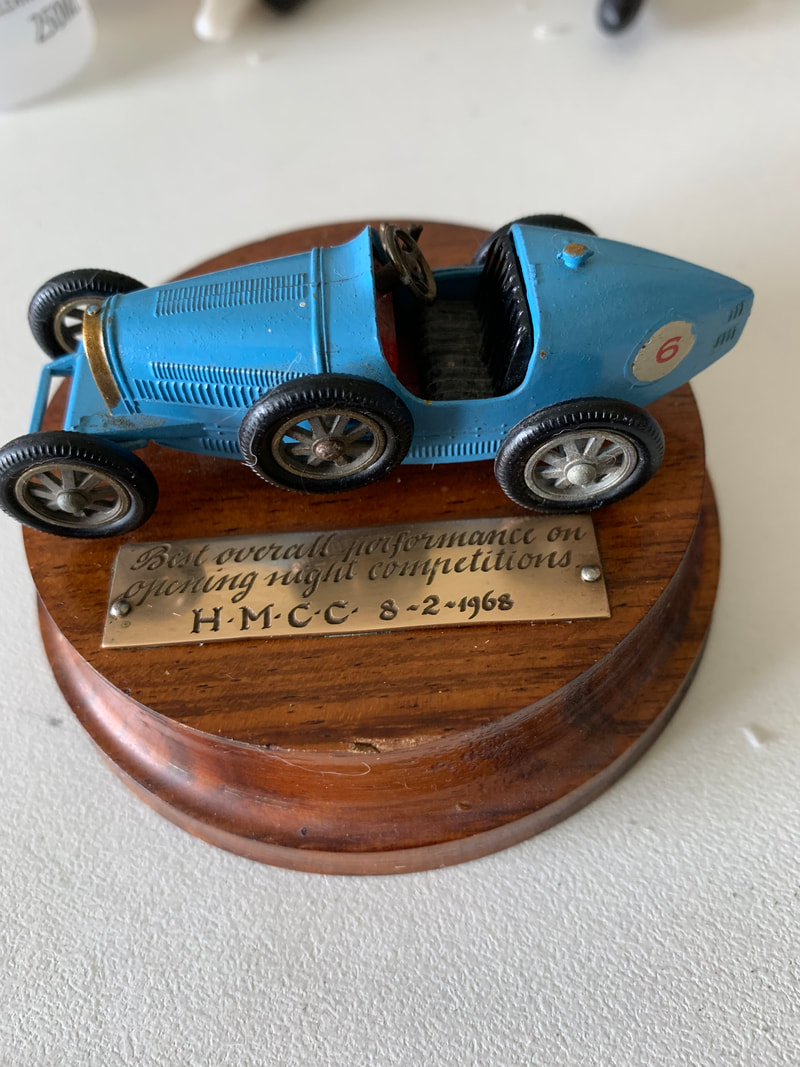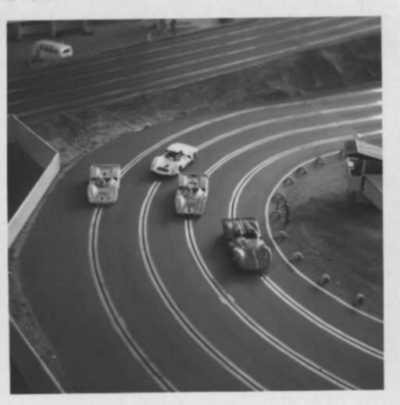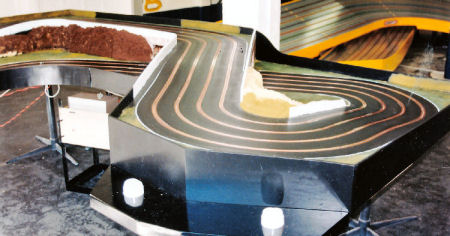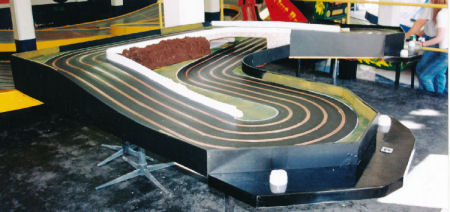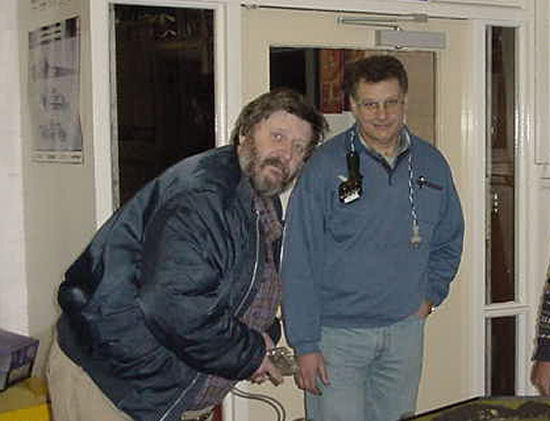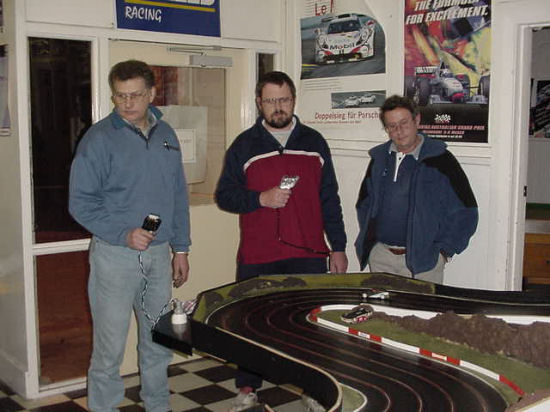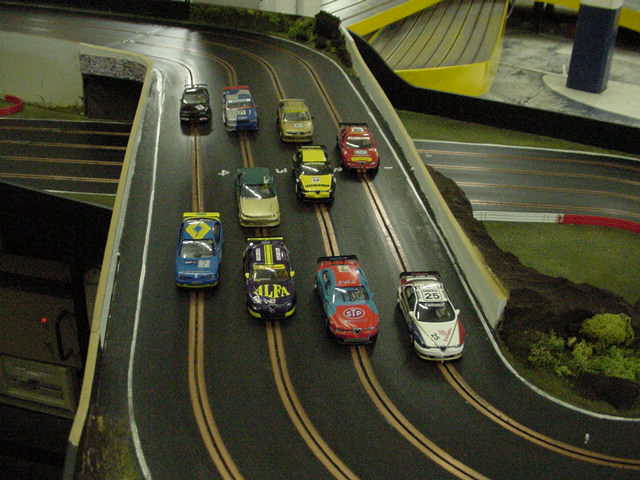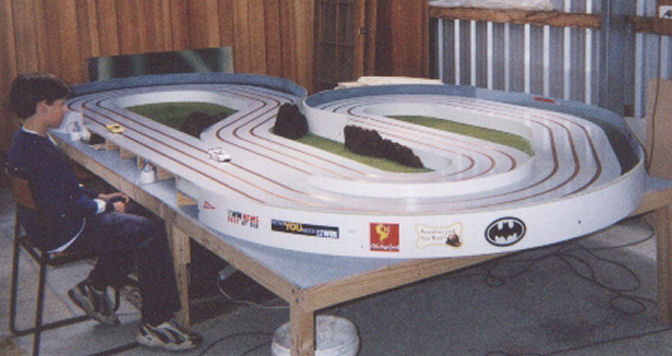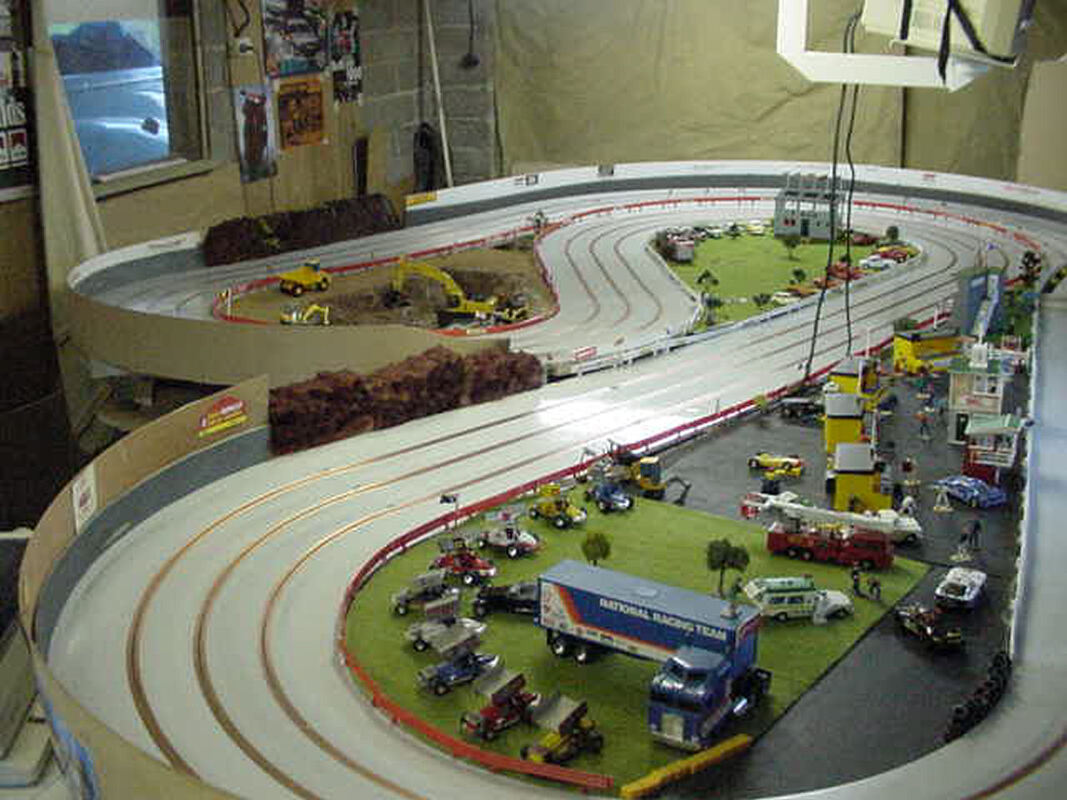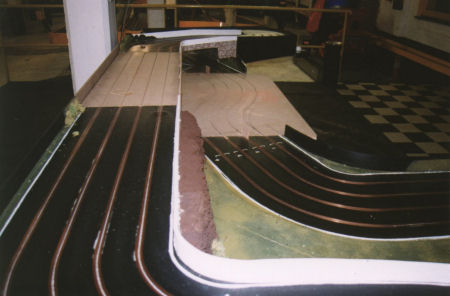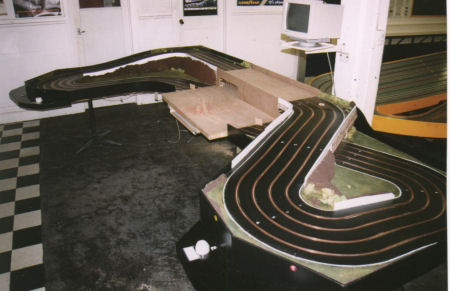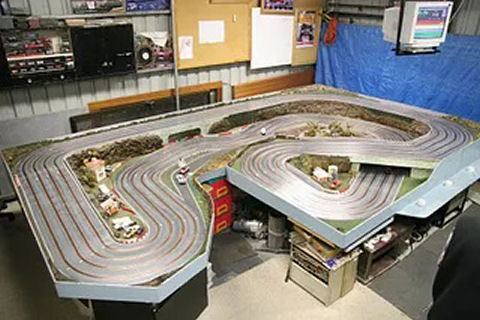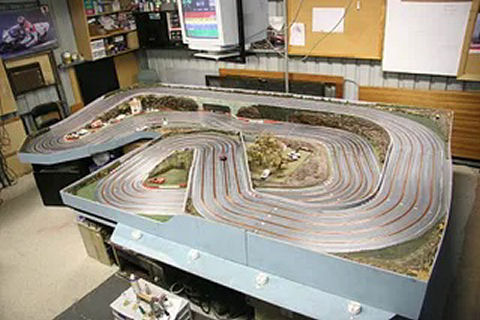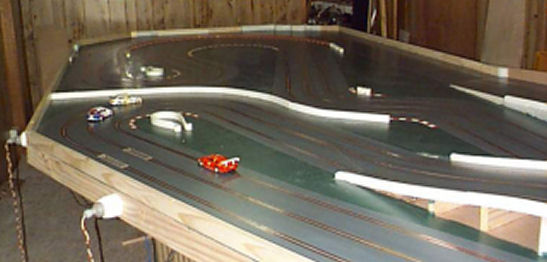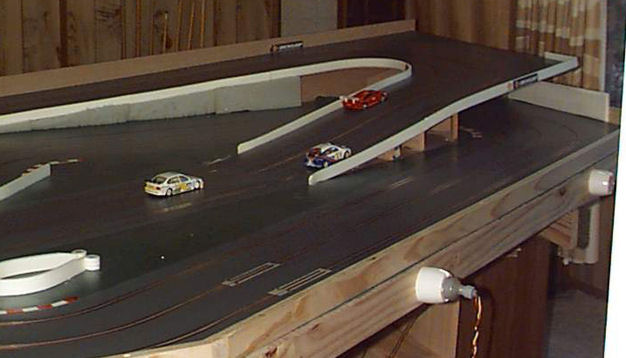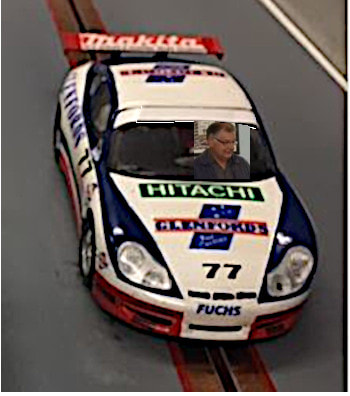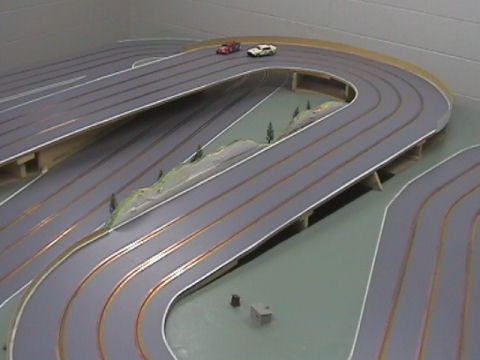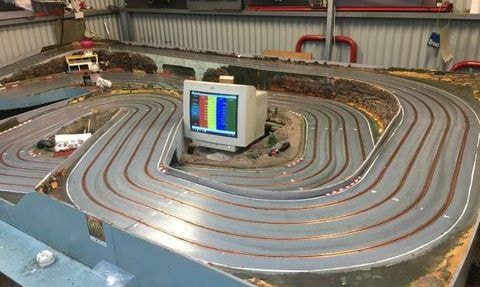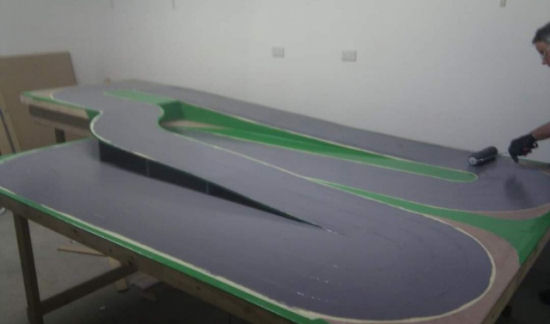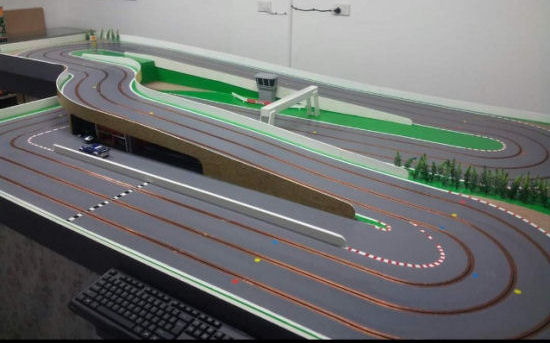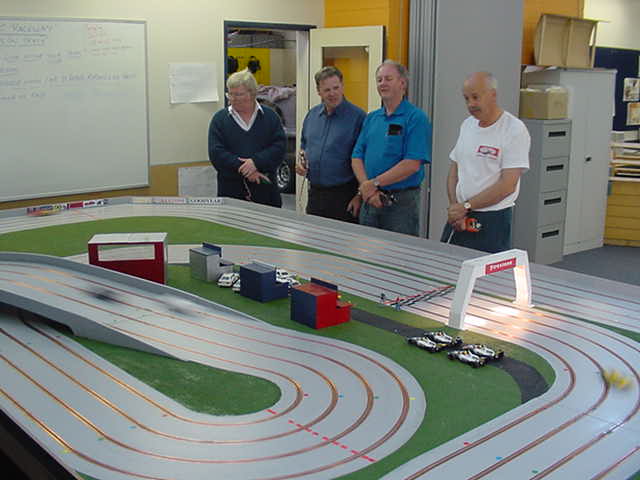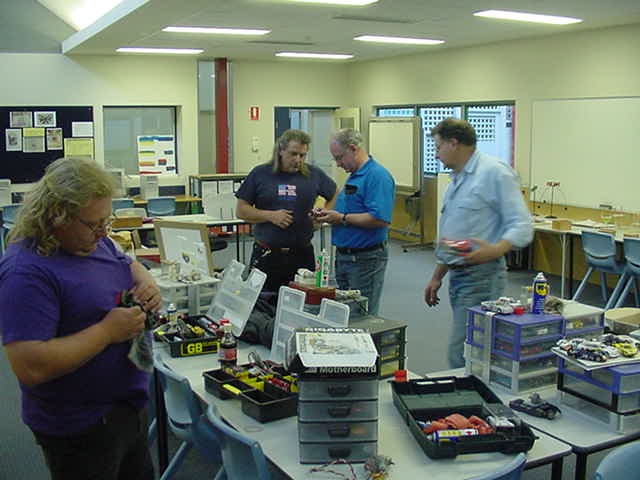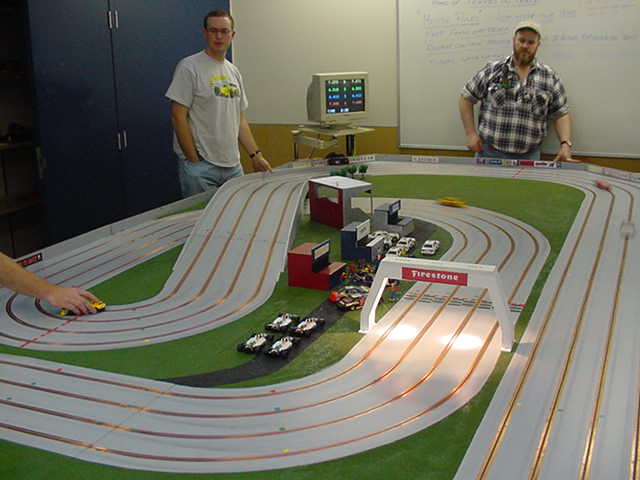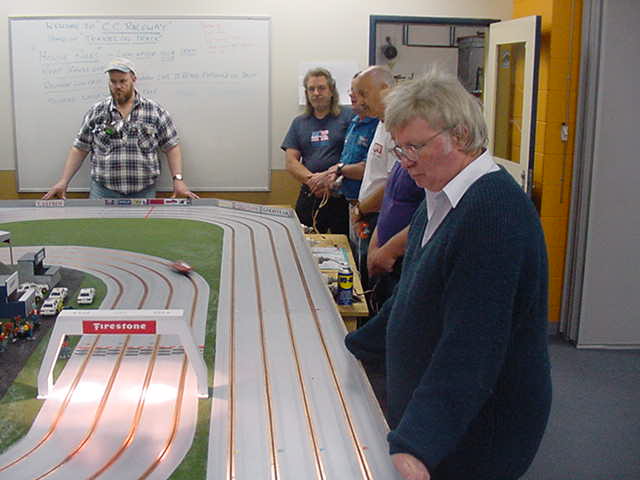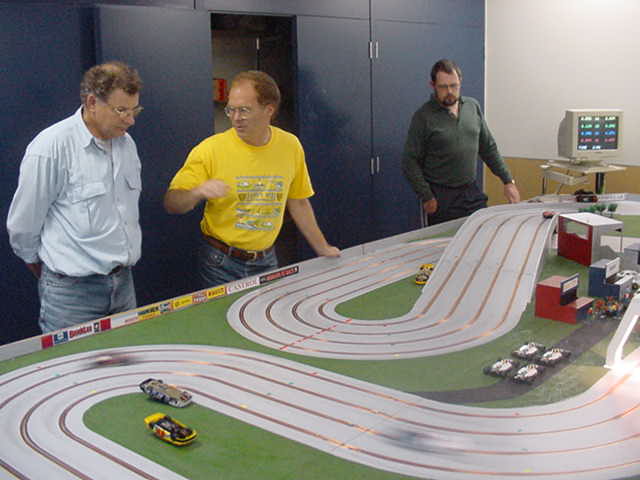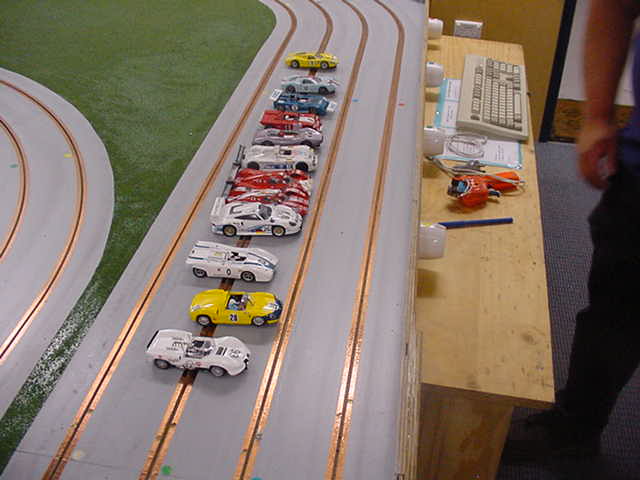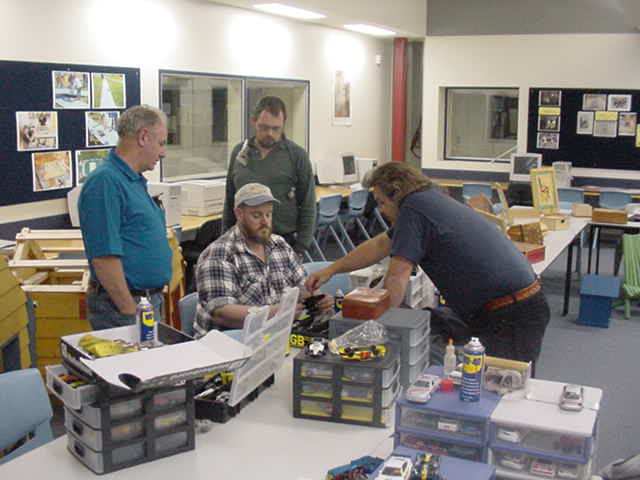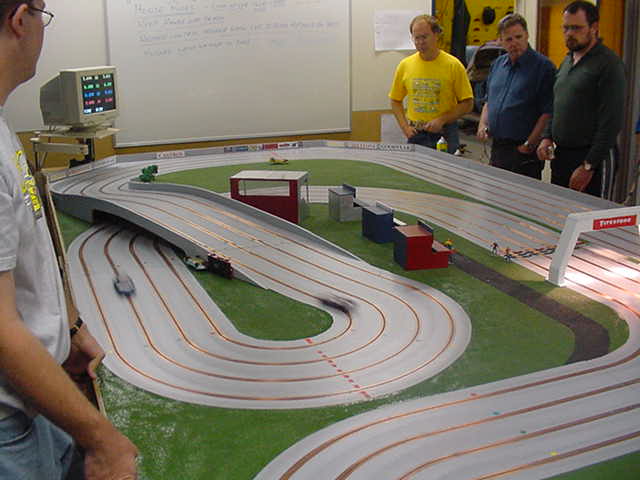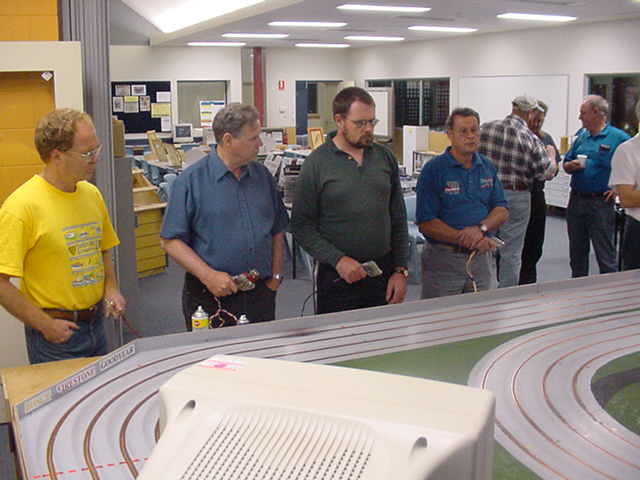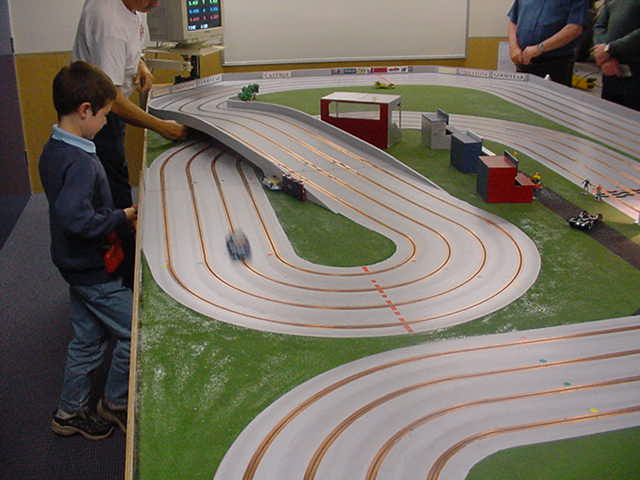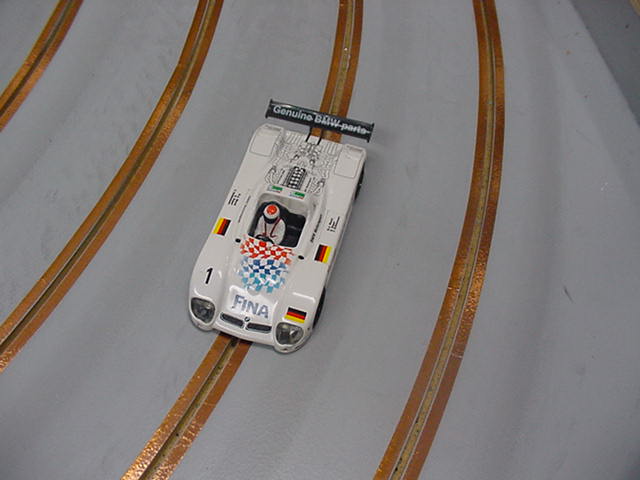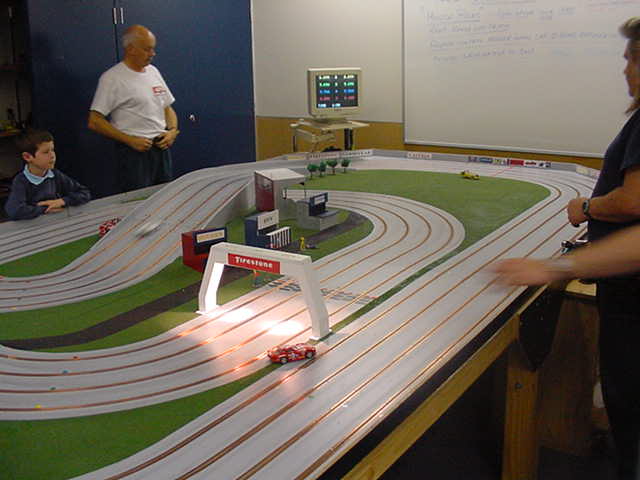History of the HMCC (original) - by Brian Johnson
The original Hobart Miniature Car Club started in 1966, some months after the opening of Australian Model Raceways in Magnet Court, Sandy Bay, HOBART, Tasmania.
AMR, as it was popularly known, at the time of building was the largest Commercial Raceway in Australia. This prestigious title was short lived as new and larger centres opened up in other states of Australia almost every month of the year. Such was the growth and popularity of this, then new hobby of Slot Car Racing.
The Hobart Miniature Car Club started as an after hours gathering of enthusiasts and developed very rapidly into a weekly event with various class racing for 1/24th scale cars.
About six months after the Club's formation it conducted with the assistance of the Management of AMR the first ever Twelve Hour race in Tasmania at the commercial centre. The race ran from 11pm Saturday night through to 11am Sunday morning on the 27th and 28th of August 1966. Promoted free to air on local Radio, remember this was something very new to Hobart, the race created so much interest in the general public that the Police were called to redirect traffic around Magnet Court from about 9am on the Sunday morning. Magnet Court was one of Tasmania's first shopping centres and the building in which the race was held and the forecourt of the centre was packed to capacity. It was estimated that well over 1000 people tried to see the end of the race.
The Hobart Miniature Car Club started as an after hours gathering of enthusiasts and developed very rapidly into a weekly event with various class racing for 1/24th scale cars.
About six months after the Club's formation it conducted with the assistance of the Management of AMR the first ever Twelve Hour race in Tasmania at the commercial centre. The race ran from 11pm Saturday night through to 11am Sunday morning on the 27th and 28th of August 1966. Promoted free to air on local Radio, remember this was something very new to Hobart, the race created so much interest in the general public that the Police were called to redirect traffic around Magnet Court from about 9am on the Sunday morning. Magnet Court was one of Tasmania's first shopping centres and the building in which the race was held and the forecourt of the centre was packed to capacity. It was estimated that well over 1000 people tried to see the end of the race.
Like many commercial raceways the people with the money backing the venture got carried away with it's initial success. The Managers, who's idea the venture had been in the first place, warned that there would be a downturn after the first twelve months or so. But the backers went ahead and built a second Raceway in the Hobart suburb of Moonah.
Alas it was too much for a City the size of Hobart with a population at that time of about 120,000 and both raceways folded less than eighteen months after the first one was established.
Now where was the HMCC to race? The Club membership was strong in number and enthusiastic. One of it's members, Bob Clayton, knew a fellow that had a small 1/24th scale track under his house and approached the now late Nigel Bills about the Club hiring his track for the Friday night races. Nigel agreed and so began a period during 1967 where members paid fifty cents entry fee every Friday night to race at Billskerville. The money was banked with a view to ultimately building our own track somewhere.
In October 1967 a State Association was formed called TASSCRA, being short for Tasmanian Slot Car Racing Association, which in turn affiliated with the National Association called CASCRA which I think stood for Confederation of Australian Slot Car Racing Associations.
While the HMCC went about raising money for it's own track, State championships were organized and the HMCC needed a larger track to conduct these events on. An approach was made to Dave Watson, of Watson's Wireless, who had a bigger 1/24th scale track above his workshop and showroom in Brisbane Street, Hobart.
Now where was the HMCC to race? The Club membership was strong in number and enthusiastic. One of it's members, Bob Clayton, knew a fellow that had a small 1/24th scale track under his house and approached the now late Nigel Bills about the Club hiring his track for the Friday night races. Nigel agreed and so began a period during 1967 where members paid fifty cents entry fee every Friday night to race at Billskerville. The money was banked with a view to ultimately building our own track somewhere.
In October 1967 a State Association was formed called TASSCRA, being short for Tasmanian Slot Car Racing Association, which in turn affiliated with the National Association called CASCRA which I think stood for Confederation of Australian Slot Car Racing Associations.
While the HMCC went about raising money for it's own track, State championships were organized and the HMCC needed a larger track to conduct these events on. An approach was made to Dave Watson, of Watson's Wireless, who had a bigger 1/24th scale track above his workshop and showroom in Brisbane Street, Hobart.
Ultimately, it was at Watson's Glen that the 1968 F1 Championship was held and resulted in four HMCC members travelling to Sydney in January 1969 to compete in The Brabham Trophy (the National F1 Championship).
The HMCC also conducted a TASSCRA sponsored 12 Hour Race at Watson's Glen.
However as was planned the HMCC had gathered together enough funds to buy the materials necessary to build their own track. All that was needed now was a building to rent.
Ladies to the rescue! In fact it was my wife Kathleen, well she wasn't then but she did become my wife later the following year. Her family knew a shopkeeper in the Hobart suburb of Newtown and they had a building adjacent to their store that wasn't being used and were happy to accept a minimal rent.
Bingo! The track was designed, mainly by Bob Clayton, materials were bought and the track was built.
Sounds simple doesn't it but believe me many hours of hard work by about six or seven people went into building, wiring, painting and scenicking the track and painting the interior of the building.
However as was planned the HMCC had gathered together enough funds to buy the materials necessary to build their own track. All that was needed now was a building to rent.
Ladies to the rescue! In fact it was my wife Kathleen, well she wasn't then but she did become my wife later the following year. Her family knew a shopkeeper in the Hobart suburb of Newtown and they had a building adjacent to their store that wasn't being used and were happy to accept a minimal rent.
Bingo! The track was designed, mainly by Bob Clayton, materials were bought and the track was built.
Sounds simple doesn't it but believe me many hours of hard work by about six or seven people went into building, wiring, painting and scenicking the track and painting the interior of the building.
This all happened in late 1967 and the first official event took place on the 8th February 1968. Incidentally it was won by Phillip Kalbfell. That proves he must be nearly as historic as I am.
The track was four lane, 1/24th scale with a lap length of approximately 106 feet (32.3mt.).Lap counters were Electro - mechanical being old PMG ( now TELSTRA) relays and counters that were used to count phone calls. The old system of an energized strip was used to activate them. It was built in a series of modules so that it could be moved but not much thought was given to getting the modules out the only door. So when it was finally moved a fairly savage attack with a circular saw was necessary.
Bob Clayton is trying to rebuild the old track which has been in storage under a house for many years and who knows one day he might get it completed!
Strangely enough the Track was never given a name. It was simply known as Newtown. (In reading an old 1969 report it was referred to as "Oldton Park" but I'm fairly sure that this was not official).
From then on most" Southern" held events were conducted at Newtown but Watson's Glenn was still used occasionally as it provided very little home track advantage, hence the 1968 F1 Championship mentioned earlier.
I am not quite sure when the original HMCC folded but I do have a copy of the race programme for 1970 with the last event in December listed as a Gymkana. This programme was signed by my wife who was Programmes Officer at the time. I assume it folded not long after that and I believe most of the other Tasmanian Clubs did too. The old problem of too much money being needed to be competitive was the major problem. If anyone has information to the contrary about the demise of the original HMCC, I'm sure we would all be interested in hearing from you.
At it's peak TASSCRA had six affiliated Clubs being from Hobart (HMCC and Watson's Glen), Launceston, Ulverstone , Wynyard and Queenstown. As a State body it oversaw six State events a year.
It is great to see the old Club up and running again albeit in a very informal way and I for one am enjoying the easy going atmosphere of Club nights and the fellowship of several of the old hands along with many new ones.
Brian Johnson 30th March 2000
Bob Clayton is trying to rebuild the old track which has been in storage under a house for many years and who knows one day he might get it completed!
Strangely enough the Track was never given a name. It was simply known as Newtown. (In reading an old 1969 report it was referred to as "Oldton Park" but I'm fairly sure that this was not official).
From then on most" Southern" held events were conducted at Newtown but Watson's Glenn was still used occasionally as it provided very little home track advantage, hence the 1968 F1 Championship mentioned earlier.
I am not quite sure when the original HMCC folded but I do have a copy of the race programme for 1970 with the last event in December listed as a Gymkana. This programme was signed by my wife who was Programmes Officer at the time. I assume it folded not long after that and I believe most of the other Tasmanian Clubs did too. The old problem of too much money being needed to be competitive was the major problem. If anyone has information to the contrary about the demise of the original HMCC, I'm sure we would all be interested in hearing from you.
At it's peak TASSCRA had six affiliated Clubs being from Hobart (HMCC and Watson's Glen), Launceston, Ulverstone , Wynyard and Queenstown. As a State body it oversaw six State events a year.
It is great to see the old Club up and running again albeit in a very informal way and I for one am enjoying the easy going atmosphere of Club nights and the fellowship of several of the old hands along with many new ones.
Brian Johnson 30th March 2000
Re Encarnation of H.M.C.C.
In 1998 a few of the original HMCC members were racing !/24 cars at Miniature Raceways when Fly released there line of 1/32 scale cars, Dave Bantoft suggested that we needed a track to run these cars on so after some discussion we decided to build a small scale track. Peter Cherry offered us a small room in Miniature Raceways to have the track .Roger Mahoney drafted a small track and Dave supplied some cash and I managed to obtain some 12mm MDF from old partitions at The Mercury, who also supplied the work area to build the track. The legs were old table legs from Mornington Inn.
When went to assemble the two track sections at Miniature Raceways Peter decided that in would be better located the the main area of the building.
When went to assemble the two track sections at Miniature Raceways Peter decided that in would be better located the the main area of the building.
The track soon attracted a lot of interest, Dave purchased Trackmate software from Canada. Once this was installed we started to conduct race nights on Tuesdays once a month.
Dennis Murray would even travel down from Launceston to run.
Dennis Murray would even travel down from Launceston to run.
Brian Johnson suggested that we should exhibit the track at the 1999 Model Makers Exhibition in the Derwent Entertainment Centre. To do this we needed to be a Club,Brian suggested that we revive the HMCC name,hence HMCC was reborn and the track was exhibited in the Foyer as the exhibition.
We continued run race nights each Tuesdays for about 18 months and also hosted the Tassie Tiger Proxy race in 2000.
During this time two other tracks arrived in Hobart, both built by Barry Pitcher. The first was owned by Mark Pinnington at Mt Rumney and the other by Terry Knight at Rose Bay.
We continued run race nights Tuesdays for about 18 months and also hosted the Tassie Tiger Proxy race in 2000.
This Proxy Race was run on the three tracks and attracted entrants from UK,USA, Emirates and Sweden as well as local entrants.
Russel Sheldon supported the event and supplied two extra chassis to friends to enter.
Russel won the event.
This Proxy Race was run on the three tracks and attracted entrants from UK,USA, Emirates and Sweden as well as local entrants.
Russel Sheldon supported the event and supplied two extra chassis to friends to enter.
Russel won the event.
The track was a bit small so we soon added two 1meter extension in between the two main sections, after the proxy race was run.
In late 2000 Pete decided to close Miniature Raceways so the track was put into storage at my work.
Lucky for us Terry Knight had a track at his house at Rose Bay so we were able to use that until we could find a new location for the HMCC track.S o racing was changed to each Tuesday.
The track was removed from storage for the 2001 MMAC exhibition and after the exhibition we transported the track to my new home in Old Beach. Problem was when we sat the track in position in my shed it did not allow enough room for people to get around the track. So Adrian and I set up the section in the available spare with a rather large gap between two sections, in the next few weeks I built another extension.
Lucky for us Terry Knight had a track at his house at Rose Bay so we were able to use that until we could find a new location for the HMCC track.S o racing was changed to each Tuesday.
The track was removed from storage for the 2001 MMAC exhibition and after the exhibition we transported the track to my new home in Old Beach. Problem was when we sat the track in position in my shed it did not allow enough room for people to get around the track. So Adrian and I set up the section in the available spare with a rather large gap between two sections, in the next few weeks I built another extension.
Terry and Mark faded away from club racing but other .tracks appeared
Other tracks followed with Dave Sommerville and Rhys Filbee building tracks.
Other tracks followed with Dave Sommerville and Rhys Filbee building tracks.
Dave's Blow Hole Park Track
John Batich constructed a track in what was originally his train room
Bruce expressed interest in buying the HMCC track so design and construction soon began on the new Shelmore Park track.
The old track was setup in Bruces shed.
The old track was setup in Bruces shed.
The new Shelmore track opened in May 2008
In 2012 Dave Gray was planning a track build and had brought the mdf, when Bob Clayton contacted me to see if anyone would want his 1/32 scale track based on the original HMCC track. Dave Gray was 1/32 scale track based on the original HMCC track. So we picked it up in April and he set it up in his shed at Mornington.
Claremont College Track Meet - 26/11/09

